Visit bustling 1967 Kitchener in this archival footage
It’s no secret – the City of Kitchener has changed drastically over the last several decades.
Whether is more skyscrapers, more businesses or more people, University of Waterloo archival footage from 1967 is visual evidence of how much Kitchener has transformed.
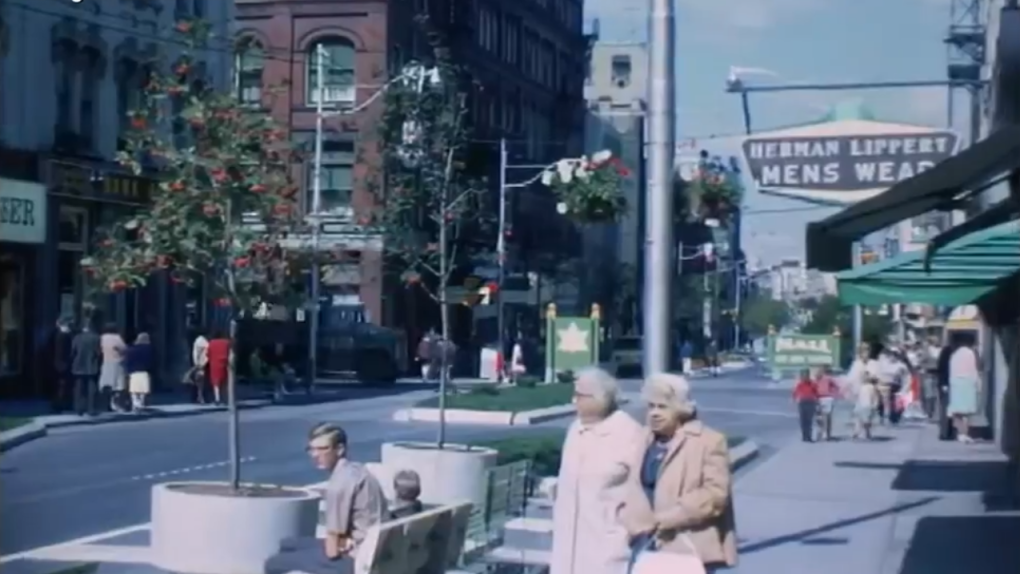 Bustling downtown Kitchener appears in archival footage from 1967. (Source: University of Waterloo Archives, Morgan Cameron Ross)
Bustling downtown Kitchener appears in archival footage from 1967. (Source: University of Waterloo Archives, Morgan Cameron Ross)
“The biggest [change] is of course this 38-storey [building], or however many floors it is, just here in the downtown area,” said longtime Kitchener resident Kenneth Boulter.
He’s also noticed the arts scene gain more prominence, along with a more diverse population.
“That mix is good,” Boulter said.
Watching the footage brought back childhood memories for Berry Vrbanovic, Kitchener’s mayor.
“My family moved to Kitchener 10 years after that original video was shot,” said Vrbanovic.
He thinks back to the old Eaton’s building, which is now condos, or the Goudies Department Store, which is now THEMUSEUM.
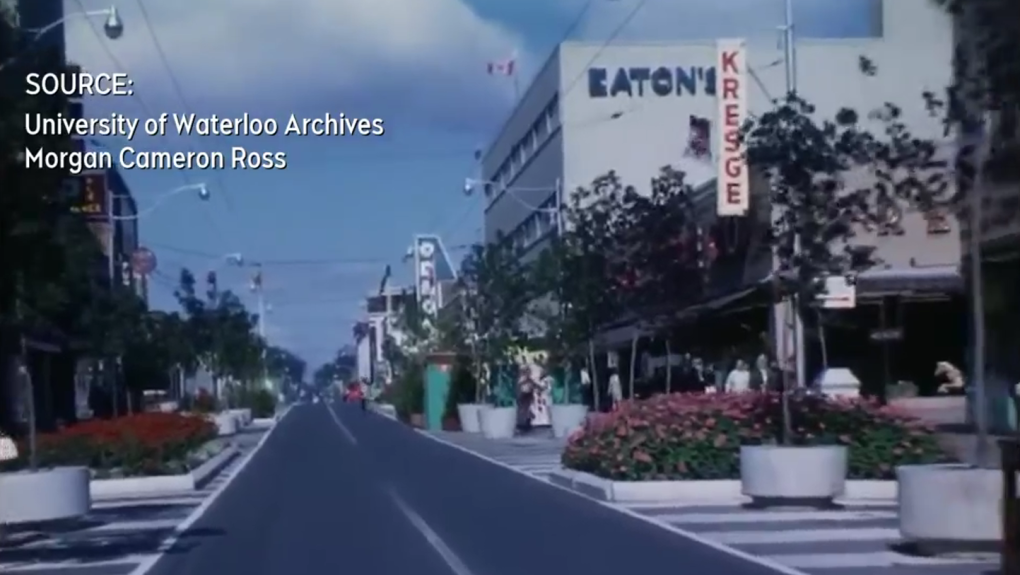 The old Eaton's building, pictured here, is now condos. (Source: University of Waterloo Archives, Morgan Cameron Ross)
The old Eaton's building, pictured here, is now condos. (Source: University of Waterloo Archives, Morgan Cameron Ross)
When you take a closer look at the footage, you may see more similarities than differences.
You can spot restaurants that extended patio seating onto the sidewalk or roadside.
“It also shows how what comes around goes around in terms of history. Things that have really only come back to fruition even as recently as the pandemic,” said Vrbanovic.
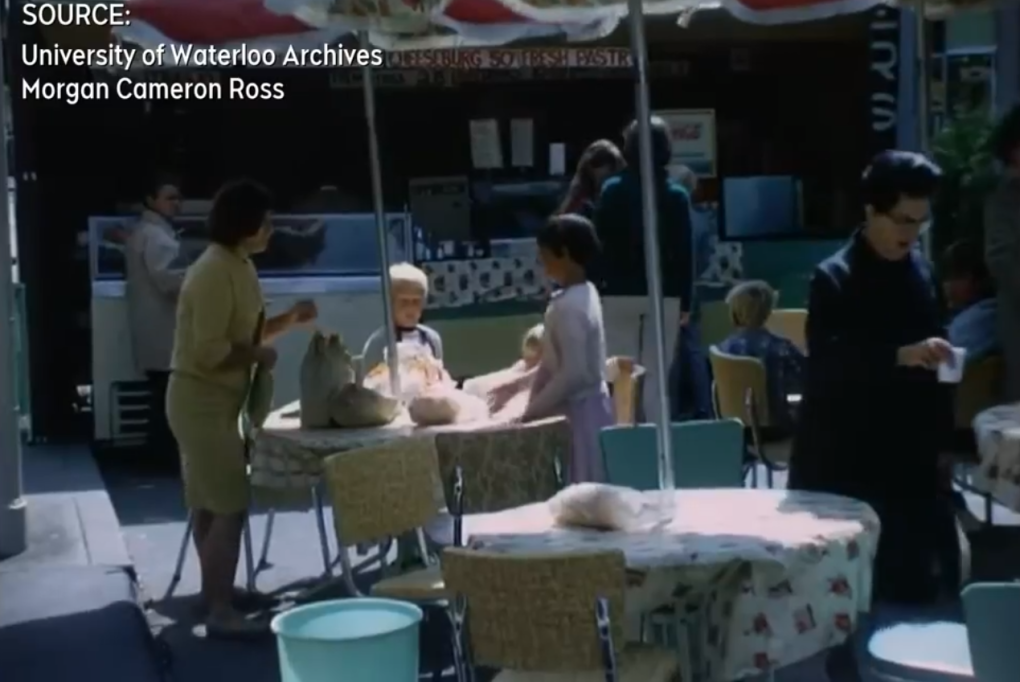 Families enjoy a street patio. (Source: University of Waterloo Archives, Morgan Cameron Ross)
Families enjoy a street patio. (Source: University of Waterloo Archives, Morgan Cameron Ross)
University of Waterloo’s Canada Research Chair in Urban Change and Social Inclusion, Brian Doucet, says in the years after the video was taken, the city saw shopping malls open up further away from King Street in downtown Kitchener.
The introduction of parkways and expressways also contributed to the decline of downtown retail, he says.
“We’re seeing downtown Kitchener becoming a bit of a residential cluster the way it wasn’t 50-odd years ago,” said Doucet.
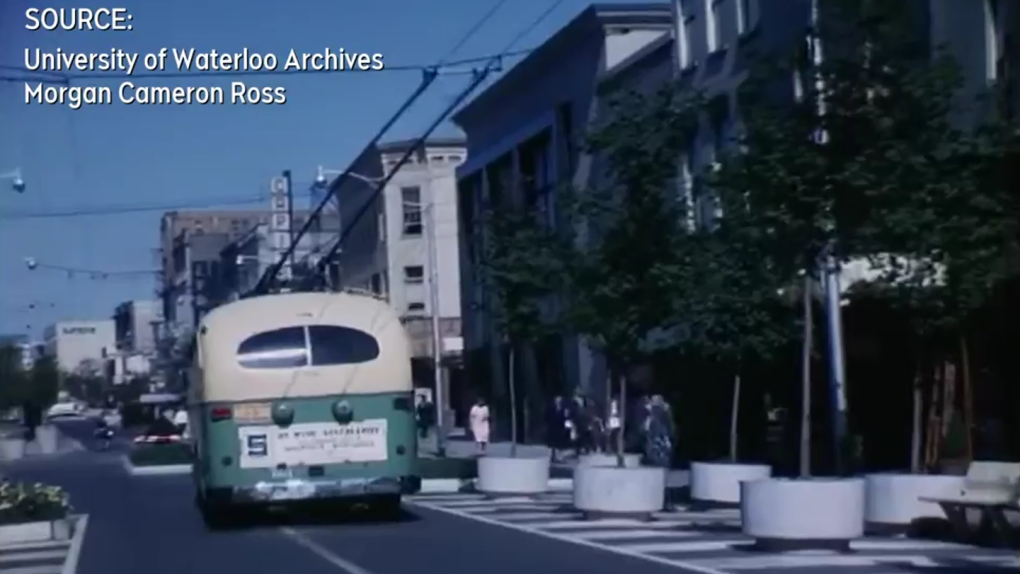 A streetcar rolls down King Street. (Source: University of Waterloo Archives, Morgan Cameron Ross)
A streetcar rolls down King Street. (Source: University of Waterloo Archives, Morgan Cameron Ross)
It’s also hard to ignore the trolley-buses, which were eventually abandoned. But they’ve seen a resurgence of sorts with the ION.
“Now we’ve seen the same central spine, where those trolley-buses ran, is now home to the light rail. And we can see the impact that’s having,” Doucet said.
So while many may say history repeats itself, this may be an example of a city taking inspiration from itself in order to lay the foundation for a better future.
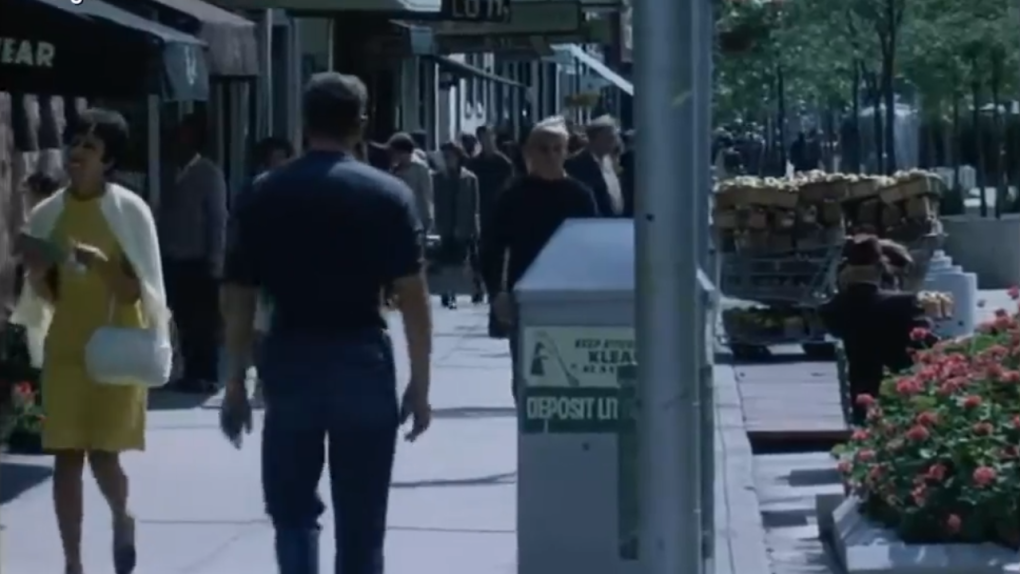 60s fashions are also on display in the archival footage. (Source: University of Waterloo Archives, Morgan Cameron Ross)
60s fashions are also on display in the archival footage. (Source: University of Waterloo Archives, Morgan Cameron Ross)
 The opening of malls outside the downtown core and the creation of parkways and expressways contributed the decline of downtown retails, says Brian Doucet from the University of Waterloo. (Source: University of Waterloo Archives, Morgan Cameron Ross)
The opening of malls outside the downtown core and the creation of parkways and expressways contributed the decline of downtown retails, says Brian Doucet from the University of Waterloo. (Source: University of Waterloo Archives, Morgan Cameron Ross)
CTVNews.ca Top Stories

Bird flu, measles top 2025 concerns for Canada's chief public health officer
As we enter 2025, Dr. Theresa Tam has her eye on H5N1 bird flu, an emerging virus that had its first human case in Canada this year.
Azerbaijan observes day of mourning for air crash victims as speculation mount about its cause
Azerbaijan on Thursday observed a nationwide day of mourning for the victims of the plane crash that killed 38 people and left all 29 survivors injured as speculation mounted about a possible cause of the disaster that remained unknown.
Prayers and tears mark 20 years since the Indian Ocean tsunami that killed some 230,000 people
People gathered in prayer and visited mass graves in Indonesia’s Aceh province on Thursday to mark 20 years since the massive Indian Ocean tsunami hit the region in one of modern history’s worst natural disasters.
Thousands without power on Christmas as winds, rain continue in B.C. coastal areas
Thousands of people in British Columbia are without power on Christmas Day as ongoing rainfall and strong winds collapse power lines, disrupt travel and toss around holiday decorations.
Donald Trump says he urged Wayne Gretzky to run for prime minister in Christmas visit
U.S. president-elect Donald Trump says he told Canadian hockey legend Wayne Gretzky he should run for prime minister during a Christmas visit but adds that the athlete declined interest in politics.
Ho! Ho! HOLY that's cold! Montreal boogie boarder in Santa suit hits St. Lawrence waters
Montreal body surfer Carlos Hebert-Plante boogie boards all year round, and donned a Santa Claus suit to hit the water on Christmas Day in -14 degree Celsius weather.
Historical mysteries solved by science in 2024
This year, scientists were able to pull back the curtain on mysteries surrounding figures across history, both known and unknown, to reveal more about their unique stories.
King Charles III focuses Christmas message on healthcare workers in year marked by royal illnesses
King Charles III used his annual Christmas message Wednesday to hail the selflessness of those who have cared for him and the Princess of Wales this year, after both were diagnosed with cancer.
Mother-daughter duo pursuing university dreams at the same time
For one University of Windsor student, what is typically a chance to gain independence from her parents has become a chance to spend more time with her biggest cheerleader — her mom.

































